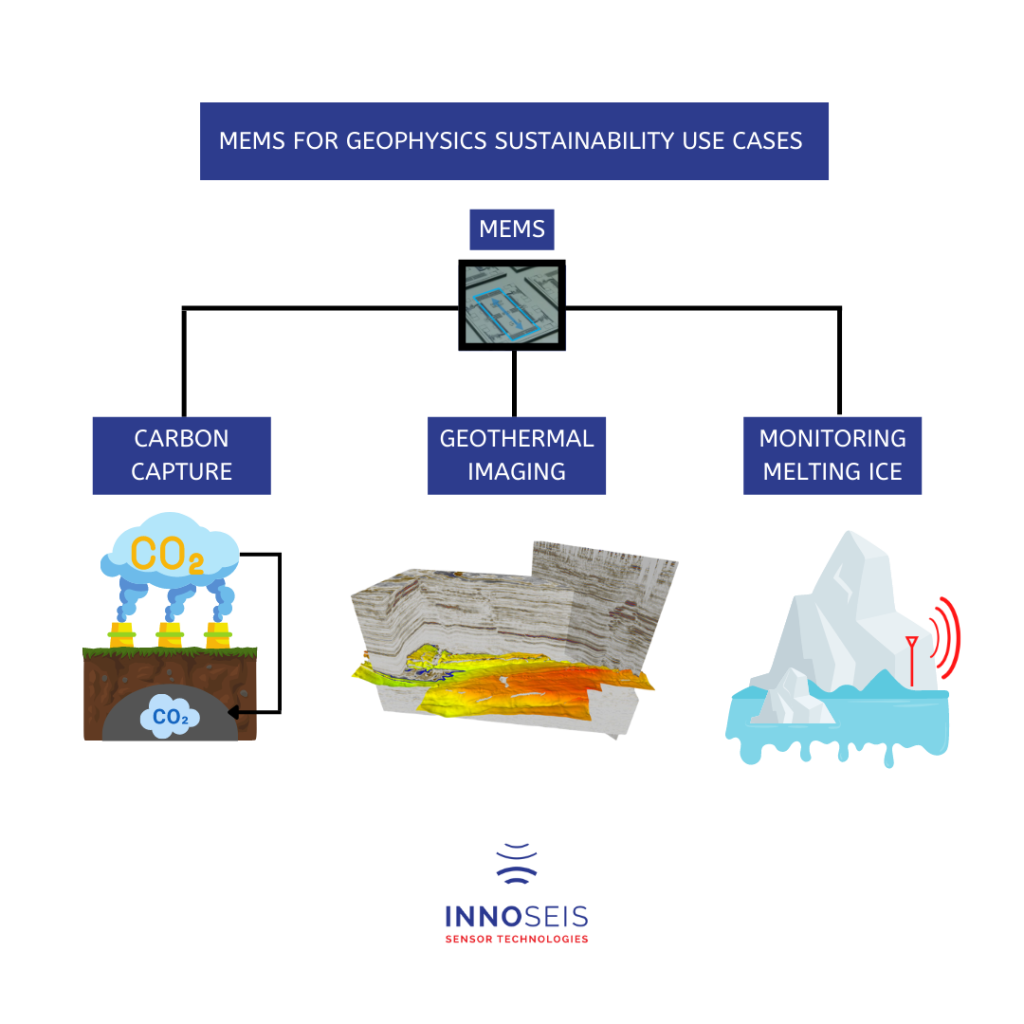In this multi-part essay Innoseis Sensor Technologies CEO, Mark Beker, investigates how MEMS inertial sensors can contribute to solutions to the global challenges humanity faces in combating climate change. In this part 1, we look at the implications for geophysics.
Introduction
In the light of increasing urgency with respect to climate change, humanity must turn to cutting edge technology to overcome significant challenges. Around the globe, world class institutes and companies are stepping up to these challenges. For example, Innoseis ST and the National Institute for Subatomic Physics, Nikhef, in the Netherlands, joined forces in the area of breakthrough inertial sensing in the pursuit of scientific goals and innovative solutions to CO2 reduction and sustainable energy generation.
The sensors in question are micro-electro-mechanical systems (MEMS), a process that allows them to be small and produced in high volumes at low cost. They will measure the tiniest of accelerations, caused by either changes in gravity or the movement of the ground. The MEMS accelerometers developed by Nikhef, were inspired by the search for gravitational waves. Novel, macroscopic suspension systems were successfully miniaturized to create an ultra precise accelerometer. It has already proven world record sensitivity that is more than an order of magnitude better than the current state-of-art and will have significantly lower power and cost.
These developments capitalize on decades of science research. The sensors, once deployed in networks,will be used in applications where the monitoring and imaging of the earth’s subterranean environment is crucial; carbon capture and storage and geothermal energy. And to support climate monitoring further, the sensors, once placed in drones and satellites, will be able to detect the changes in gravity caused by depleting ice caps and changes in sea level.

Geothermal imaging. To address the needs of a growing sustainable energy demand, geothermal energy is gaining popularity as a clean and abundant energy source. It utilizes the heat generated by the Earth, which is extracted to heat houses, power industrial applications, and generate electricity. It requires an excellent knowledge of the underlying geology to plan optimal well locations and extraction rates. Seismic surveying technology is a crucial link in addressing the challenges of geothermal energy. This technique makes use of sensor networks to image underground structures non-invasively. Innoseis has previously developed Tremornet, a wireless sensor solution that rids the industry of bulky cabled sensor networks and makes seismic surveying more cost-effective. The MEMS accelerometer will allow these sensors to become even smaller and lighter and offer improved signal performance at low frequencies.
Carbon capture and storage. During the transition to 100% sustainable energy sources fossil fuels will need to be used for decades to come. International bodies, countries (including China and the United States, the world’s two largest greenhouse gas emitters), and many large corporations have all established net-zero emission goals by mid-century. It is now recognized that large quantities of CO2 will need to be stored in subsurface geologic formations to reach global decarbonization goals. Geomechanical issues affecting long-term storage of CO2 will need to be well understood to make this a viable solution. The task of geophysicists will be to select the most suitable reservoirs and to identify potentially active faults to limit the possibility that injected CO2 pressure could induce seismic activity, or possibly leak away. Seismic imaging techniques with networks of sensitive accelerometers offer a non-obtrusive way to shine light on these subterranean dynamics.
Earth’s ice melt monitoring. Our planet’s ice sheets and glaciers hold as much as 70% of the Earth’s fresh water. It is expected that as the Earth’s temperatures rise, ice will melt and the sea levels will inevitably rise. Fast changes in the climate are already pushing us towards a world-wide crisis that will require widespread and accurate monitoring of our planet’s water. It is likely that many feedback loops are still unaccounted for. The melting of the ice caps will not only raise sea levels, but the disappearance of the white surfaces will reduce the amount of sunlight which is reflected back into space, further increasing the heat absorbed on Earth. Furthermore, the ice mass on the poles gravitationally pulls all of the water mass on Earth towards the poles. When ice caps melt, the ocean’s waters will redistribute from the Earth’s poles, further raising sea levels. One crucial way to measure how much sea levels are rising from melting ice sheets and glaciers is to monitor the amount of mass they are losing. Graviometry has recently been crucial in monitoring this mass loss by measuring changes in the gravitational pull of ice sheets. Traditionally this has been performed by ground-based gravitometers which are large, expensive and limited in their accuracy. Their expensive costs (> US$ 100,000) mean they cannot be widely used. Recently MEMS technology has quickly taken the lead in graviometry by offering a lightweight and economic alternative which can be readily mounted on UAVs and (submersible) drones. While impressive space missions like GRACE have performed graviometry of the ice sheets from low-Earth orbit, there are few microchip platforms with sufficient performance to allow application in airborne and submersible drones. In the coming century, high-precision monitoring of ice and water will be one of the centerpieces of policy decisions and actions. MEMS accelerometers and other sensors which can be implemented anywhere at a small cost will be at the fore-front of our society’s efforts to pivot away from climate disasters.
Innoseis ST, its partners and many other institute around the world bring together the world’s most powerful MEMS technology for measuring gravity and accelerations to guide our society via low-cost, high quality monitoring data; crucial for science and industry’s next steps in the coming climate crisis.